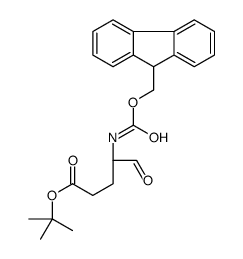Polystyrene resin

Polystyrene resin structure
|
Common Name | Polystyrene resin | ||
|---|---|---|---|---|
| CAS Number | 9003-70-7 | Molecular Weight | 409.47500 | |
| Density | 0.29 g/cm3 (free fall)(lit.) | Boiling Point | N/A | |
| Molecular Formula | C24H27NO5 | Melting Point | N/A | |
| MSDS | Chinese USA | Flash Point | N/A | |
|
Adsorption of di-2-pyridyl ketone salicyloylhydrazone on Amberlite XAD-2 and XAD-7 resins: characteristics and isotherms.
J. Colloid. Interface Sci. 323(1) , 1-5, (2008) The adsorption of DPKSH onto Amberlite XAD-2 (styrene resin) and XAD-7 (acrylic ester resin) has been investigated, at (25+/-1) degrees C and pH 4.7. The experimental equilibrium data were fitted to the Langmuir, Freundlich, and Dubinin-Radushkevich (D-R) mod... |
|
|
The use of Chromosorb 102 to air samples pre-concentration in the determination of low concentrated dibutylphthalate.
Bull. Inst. Marit. Trop. Med. Gdynia 39(1-2) , 81-9, (1988)
|
|
|
Hydrophobic adsorption chromatography to reduce nonspecific staining by rhodamine-labeled antibodies.
Anal. Biochem. 158(1) , 233-7, (1986) Rhodamine absorbed to protein was removed from rhodamine-conjugated antibody solutions by adsorption to hydrophobic macroporous beads (Bio-Beads SM-2) following gel permeation chromatography. This simple technique eliminated the contaminating free dye more ef... |
|
|
Trapping efficiency of selected adsorbents for various airborne pesticides.
J. Environ. Sci. Health B 26(4) , 367-82, (1991) A study was conducted to compare the efficiency of five adsorbents used by government and private laboratories to collect airborne pesticides. Six pesticides, acephate, chlordane, chlorpyrifos, diazinon, heptachlor, and propoxur, were vaporized in a closed sy... |
|
|
Sampling of airborne pesticides using Chromosorb 102.
Bull. Environ. Contam. Toxicol. 35(4) , 460-5, (1985)
|
|
|
Speciation of antimony using chromosorb 102 resin as a retention medium.
Anal. Sci. 19(2) , 259-64, (2003) The selective retention of the Sb(III) chelate with ammonium pyrrolidine dithiocarbamate (APDC) on a column of Chromosorb 102 resin from a buffered sample solution including Sb(V) was used for the determination of Sb(III). The retained antimony was eluted wit... |
|
|
Chlordane sampling efficiency with Chromosorb 102 and ethylene glycol.
Am. Ind. Hyg. Assoc. J. 41(8) , 599-601, (1980) An organic polymeric solid, Chromosorb 102, has been reported to collect various pesticides from air. In this study the collection efficiency of Chromosorb 102 for chlordane was evaluated. Preparation of sampling tubes containing this medium for field samplin... |
|
|
Microbial degradation of styrene: biochemistry, molecular genetics, and perspectives for biotechnological applications.
Appl. Microbiol. Biotechnol. 72(1) , 1-10, (2006) Large quantities of the potentially toxic compound styrene are produced and used annually by the petrochemical and polymer-processing industries. It is as a direct consequence of this that significant volumes of styrene are released into the environment in bo... |
|
|
Poly(styrene-divinylbenzene) beads surface functionalized with di-block polymer grafting and multi-modal ligand attachment: performance of reversibly immobilized lipase in ester synthesis.
Bioprocess Biosyst. Eng. 34(6) , 735-46, (2011) Fibrous poly(styrene-b-glycidylmethacrylate) brushes were grafted on poly(styrene-divinylbenzene) (P(S-DVB)) beads using surface-initiated atom transfer radical polymerization. Tetraethyldiethylenetriamine (TEDETA) ligand was incorporated on P(GMA) block. The... |
|
|
An ex situ evaluation of TBA- and MTBE-baited bio-traps.
Water Res. 46(12) , 3879-88, (2012) Aquifer microbial communities can be investigated using Bio-traps(®) ("bio-traps"), passive samplers containing Bio-Sep(®) beads ("bio-beads") that are deployed in monitoring wells to be colonized by bacteria delivered via groundwater flow through the well. W... |